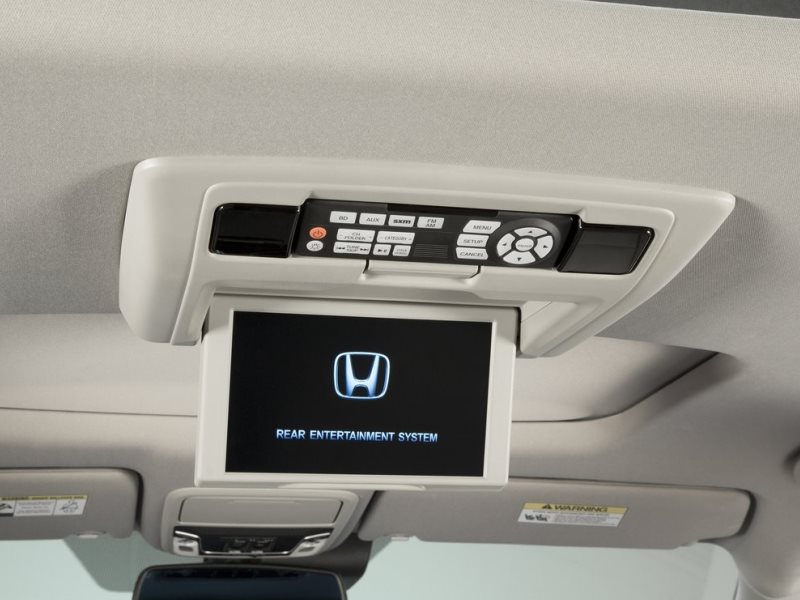Recent Articles
Popular Makes
Body Types
10 Things You Need To Know About The 2016 Honda Pilot

The 2016 Honda Pilot presents family SUV shoppers with the first all-new full-size option from the brand in six years. More than a simple refresh, the redesigned Honda Pilot is a dramatically different take on people moving as compared to the model it replaces. Gone is the right angle look of the first two Pilot generations and in its place is a more fluid and contemporary sport-utility vehicle - and one that speaks to the insatiable craving for luxury that has emerged from buyers at nearly every price point. The Honda Pilot also happens to be larger, yet more compliant to drive than ever before, a testament to the engineering effort undertaken by the brand's design team. Let's take a look at 10 things you need to know about the 2016 Honda Pilot.
1. The 2016 Honda Pilot Is An All-New Design
The 2016 Honda Pilot joins its premium platform-mate the Acura MDX in gaining a significantly tweaked chassis for the current model year. Even more obvious has been the decision to move away from the truck-like looks of the 2015 edition of the Honda Pilot and instead embrace sleeker styling that is more in keeping with competitors such as the Chevrolet Traverse and the Ford Explorer. Honda explained that the upright shape of the previous Pilot often had potential customers concerned about its fuel efficiency, given its utility-focused angles, and that the streamlined design language of the new model was adopted in part to alleviate those preconceptions.
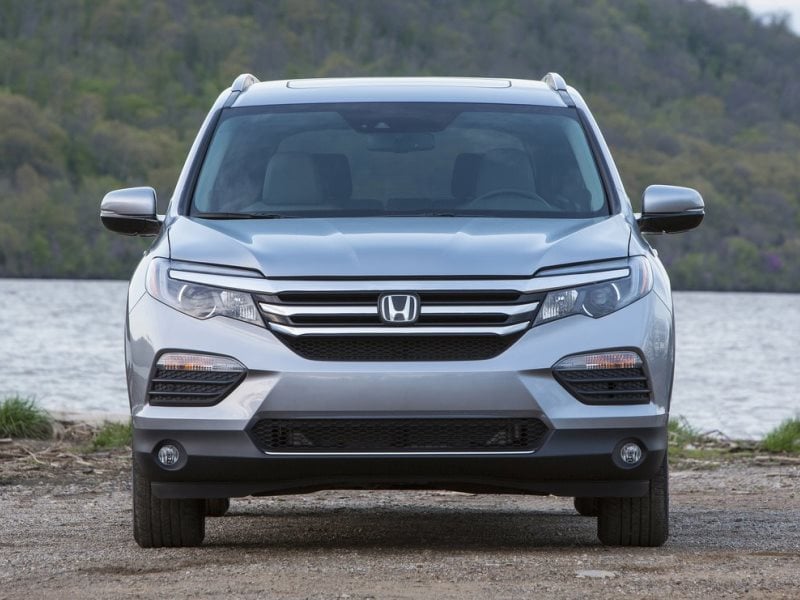
2. The 2016 Honda Pilot Might Be Bigger, But Manages To Be Lighter
The 2016 Honda Pilot's wheelbase has grown by almost two inches as compared to the 2015 model (and its overall length by nearly four inches) but don't think that just because the SUV is bigger than before that it's also packed on the pounds. In fact, thanks to the aggressive use of lightweight materials such as high-strength steel and aluminum, the Honda Pilot has actually managed to shed some weight. The top-spec Pilot is close to 300 lbs lighter than its 2015 equivalent, which helps improve the vehicle's handling as well as reduce its fuel consumption.
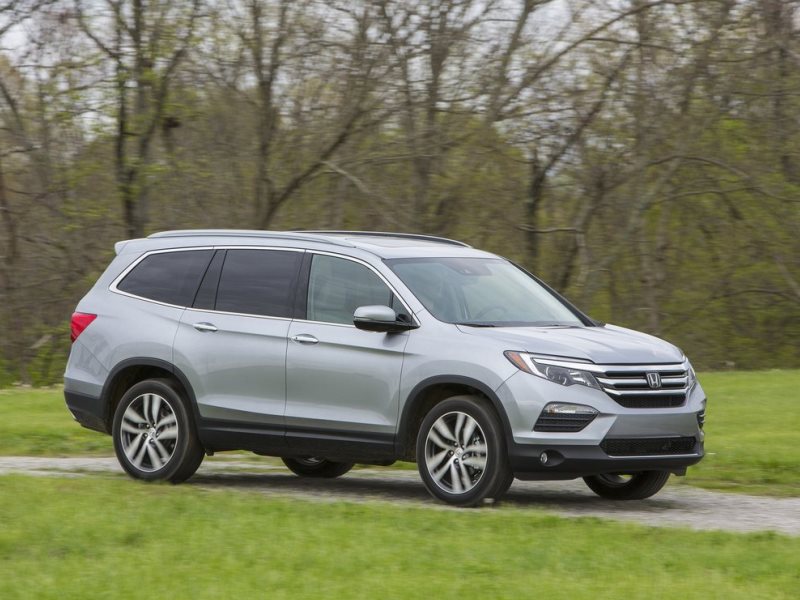
3. The 2016 Honda Pilot's Revised Cabin Now Offers A Seven Passenger Option
In the past, the Honda Pilot was known for its three-row, eight-passenger configuration across the board. For 2016, however, the Honda Pilot adds a new wrinkle: the availability of a seven-passenger edition (found in the very top trim level) that replaces the second row bench with a pair of captain's chairs. Certain models with the second-row bench gain a new single-button tilt and slide feature that makes it that much easier to get into the back of the vehicle. Of course, the very back of the Pilot is still child-friendly at best - it's not really the optimum spot for adults on longer road trips. Folding down both sets of back seats reveals just under 90 cubic feet of cargo space in total.
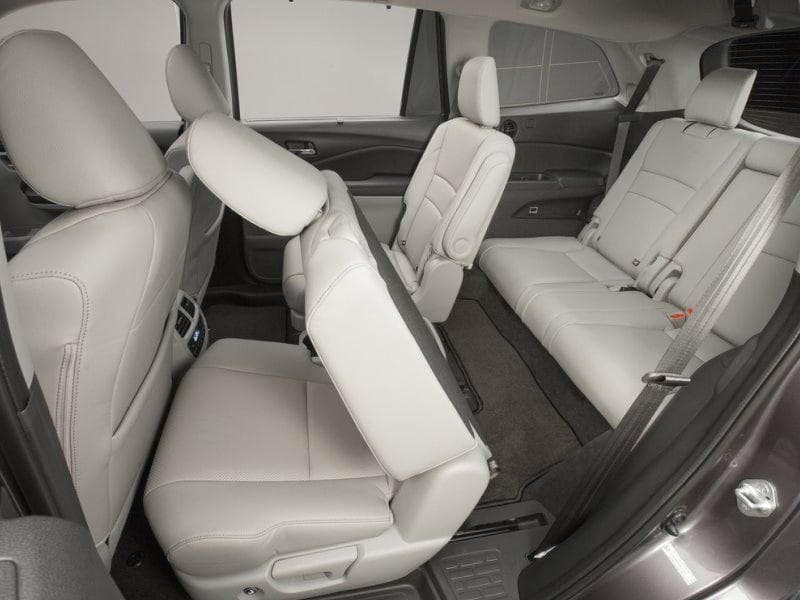
4. The 2016 Honda Pilot Upgrades Its Interior Look
The 2016 Honda Pilot hasn't just done a number on its exterior styling. In response to criticisms about the 'plain' presentation of the previous Pilot's cabin, the new model steps up its interior game. The easiest place to spot the Honda Pilot's upgrades is the door panels, where hard plastics have been replaced by softer materials that are more pleasant to the touch. On the center stack, you'll also notice a new eight-inch touchscreen on certain models that brightens up the SUV's infotainment details considerably. Even the gauge cluster adopts a modern, digital look for 2016.
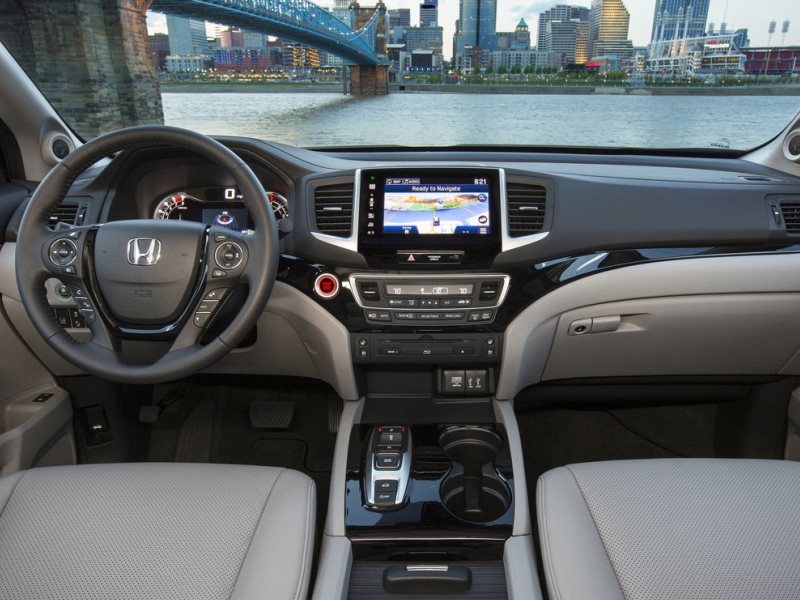
5. The 2016 Honda Pilot Is Offered In Five Trim Levels
The 2016 Honda Pilot starts out in LX trim, which includes Bluetooth connectivity, a rearview camera, 18-inch wheels, a noise cancellation system, cruise control, and a USB port. Moving up to the Honda Pilot EX introduces LED running lights, tri-zone automatic climate control, the HondaLink system for integrating smart phones, satellite radio, a louder stereo system, automatic headlights, and keyless entry and ignition, while the Pilot EX-L benefits from leather seats, a leather-wrapped steering wheel, heated front seats, a power tailgate, and a sunroof. The upscale Honda Pilot Touring offers a navigation system, several active safety features, an automatic start/stop system for the engine, and parking assistance, while the range-topping Pilot Elite installs 20-inch wheels, automatic high beam headlights (LED units), automatic windshield wipers, ventilated front seats, heated second-row seats, and a panoramic sunroof.

6. The 2016 Honda Pilot Maintains Its V6 Power Plant
The 2016 Honda Pilot continues to make use of a 3.5-liter V-6 as its only available drivetrain option. This isn't the same unit that appeared under the hood of last year's Honda Pilot, however, as it's been given a thorough makeover that includes a new direct fuel injection system. The end result is 280 horsepower and 26 lb-ft of torque, with both figures representing a significant upgrade over the departed Pilot. The first three trim levels of the SUV are equipped with a six-speed automatic transmission, but Touring and Elite models are matched with a new nine-speed automatic.

7. The 2016 Honda Pilot Offers Optional All-Wheel Drive
The 2016 Honda Pilot features an all-wheel drive system that can be added as an option to every trim level. While the Honda Pilot's all-wheel drive is intended to help drivers deal with snowy weather and wet roads more than serve as a legitimate off-road weapon, on all but the base model SUV you can make use of a drive mode selector that prepares the system to deal with mud, sand, and snow if you need to make the occasional excursion off the beaten path. The all-wheel drive system can also shuttle torque front and rear, and side-to-side, making it more versatile than previous setups even when set to automatic mode.

8. The 2016 Honda Pilot Features Improved Fuel Economy
As mentioned earlier, the 2016 Honda Pilot is lighter than ever before, which has an important impact on fuel mileage. Throw in the fact that the Honda Pilot's V-6 now features direct fuel injection and can be mated to a nine-speed automatic transmission, and you have a formula for fuel mileage that beats the 2015 version of the SUV. The nine-speed models check in with 19-mpg in stop and go driving and 26-mpg on the highway, which is two miles per gallon better than the previous Pilot for each respective measure. The six-speed edition of the Honda sport-utility vehicle is almost identical, dropping one mile per gallon from the city rating.
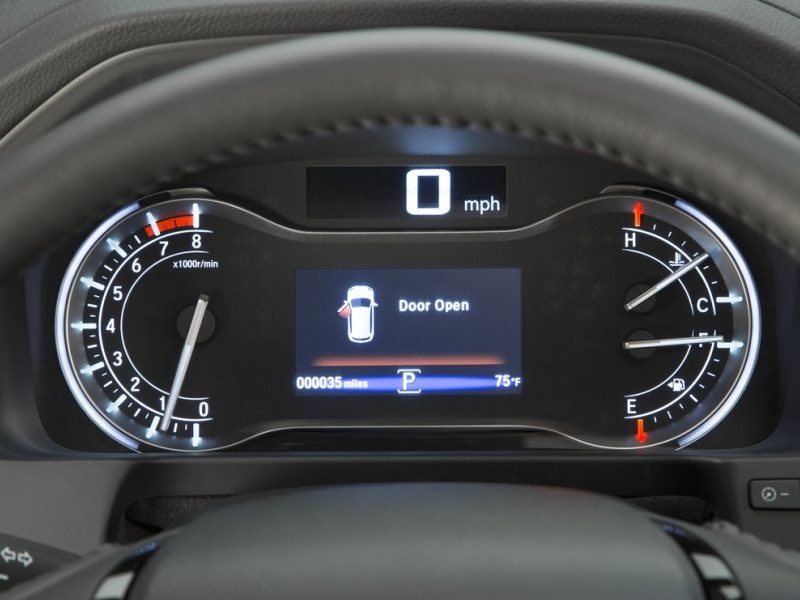
9. The 2016 Honda Pilot Introduces New Safety Technology
The 2016 Honda Pilot is quick to brag in its brochure about the Honda LaneWatch feature, which shows drivers a view of the lane directly to the right of the vehicle when the right turn signal is activated - effectively eliminating the blind spot on that side of the SUV. You can also equip the Honda Pilot with a forward collision warning system (including automatic braking), a lane departure warning and lane keeping system, a 'road departure' intervention system that keeps the vehicle from driving onto the shoulder, and a more traditional blind spot monitoring feature.
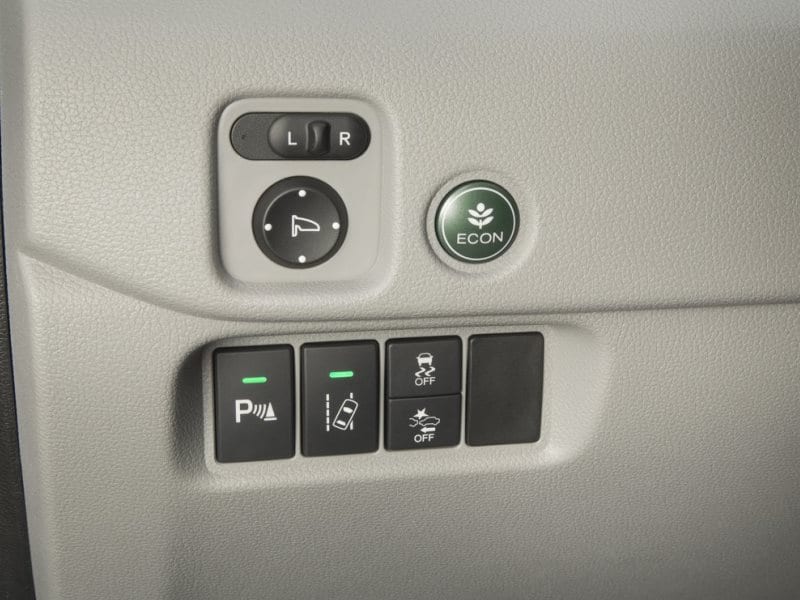
10. The 2016 Honda Pilot Stays Out Of Luxury Pricing Territory
The 2016 Honda Pilot's entry-level price stands at $29,995, which gets you behind the wheel of a front-wheel drive LX model. This makes the Pilot roughly the same price as a comparable Toyota Highlander, and also slightly cheaper than the base Ford Explorer. The Honda Pilot Elite - which includes all-wheel drive as standard equipment - asks an MSRP of $46,420. This is only $400 below the starting price of the SUV's Acura MDX corporate sibling, indicating that the ceiling of Pilot pricing seems to intersect neatly with the floor of full-size luxury transportation.
